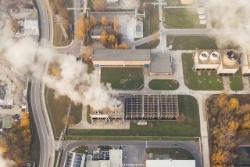Putting A Number On Agricultural Greenhouse Gas Emissions
A total of ten tools and calculators can now be used by farmers and growers to get an understanding of their current agricultural greenhouse gas emissions.
He Waka Eke Noa Programme Director Kelly Forster says the second set of tools and calculators has been assessed, following the first tranche earlier this year. Assessed tools now include: Foundation for Arable Research’s (FAR) ProductionWise, Beef + Lamb New Zealand’s GHG calculator (available in July), and Toitū’s Farm emanage.
The full list and the industries they cover:
| Dairy | Sheep & Beef | Deer | Horticulture | Arable | |
| Alltech | ü | ü | |||
| E2M | ü | ü | |||
| Farmax | ü | ü | ü | ||
| Fonterra | ü | ||||
| Hort NZ | ü | ||||
| MfE | ü | ü | ü | ü | ü |
| Overseer | ü | ü | ü | ü | ü |
| ProductionWise (FAR) | ü | ||||
| B+LNZ GHG Calculator | ü | ü | |||
| Farm emanage (Toitū) | ü | ü | ü | ü |
“By the end of 2022, all of our farms need to know their greenhouse gas numbers,” says Kelly. “This is one of the milestones that the primary sector has agreed with Government under the He Waka Eke Noa partnership. Farmers have a variety of tool and calculators available now, to get a handle on their GHG numbers.”
Farms need to know their numbers by the end of 2022 if they are 80ha or more, or have a dairy supply number, or are a cattle feedlot as defined in freshwater policy. Around 11,000 farmers already have a GHG number for their farm.
“We know that not all farms have the same opportunity to reduce emissions, and one of the principles of the He Waka Eke Noa partnership is to recognise the good work already done,” says Kelly. “We don’t expect every single farm to reduce their emissions from current levels.
“However, the choices each farmer makes will have a collective impact on Aotearoa’s agricultural greenhouse gas emissions, and the first step is knowing your numbers.”
The Partnership is working to develop the farm-level emissions pricing system for 2025, including recognising on-farm sequestration. The Review of Models highlights that different tools can give different outputs at this stage, due to a combination of differing assumptions around drymatter and energy utilisation, nitrogen content of forages, and assumptions made by the model operator on the farm system. This is one of the complexities being resolved in the process of developing the pricing system.
Preliminary recommendations for the pricing system, including recognising on-farm sequestration, will be shared more broadly with farmers and growers by industry partners in November. In March 2022 He Waka Eke Noa will present recommendations to Ministers.
The full report can be found here: https://hewakaekenoa.nz/wp-content/uploads/2021/05/Review-of-Models-Calculating-Farm-Level-GHG-Emissions-2-June-2021.pdf
Want to know your numbers?
Farmers wanting advice are encouraged to talk to their industry representative, supply company, or other trusted advisors, about knowing their numbers and incorporating GHG into Farm Environment Plans.
To find out more about agricultural greenhouse gas emissions and how they work at the farm level, have a look at www.agmatters.nz
To talk to the Partnership, contact yourfeedback@hewakaekenoa.nz.


 Brewers Association: Brewers Association Of New Zealand Supports Modernisation Of Alcohol Legislation
Brewers Association: Brewers Association Of New Zealand Supports Modernisation Of Alcohol Legislation Commerce Commission: ComCom Warns Of Pyramid Schemes After South Auckland Scammers Plead Guilty
Commerce Commission: ComCom Warns Of Pyramid Schemes After South Auckland Scammers Plead Guilty MBIE: MBIE Publish Mid-Point Review Of The Phase-Out Of The Low Fixed Charge (LFC)
MBIE: MBIE Publish Mid-Point Review Of The Phase-Out Of The Low Fixed Charge (LFC) Science Media Centre: Company Claims To Have “De-Extincted” The Dire Wolf – Expert Reaction
Science Media Centre: Company Claims To Have “De-Extincted” The Dire Wolf – Expert Reaction Stats NZ: Greenhouse Gas Emissions Fall 2.0 Percent In The December 2024 Quarter
Stats NZ: Greenhouse Gas Emissions Fall 2.0 Percent In The December 2024 Quarter The Reserve Bank of New Zealand: Christian Hawkesby Appointed As Governor Of The RBNZ
The Reserve Bank of New Zealand: Christian Hawkesby Appointed As Governor Of The RBNZ



